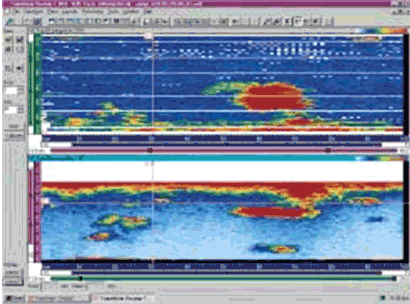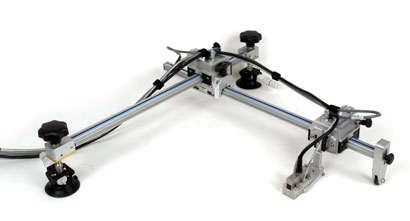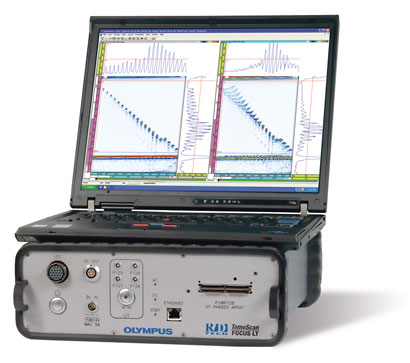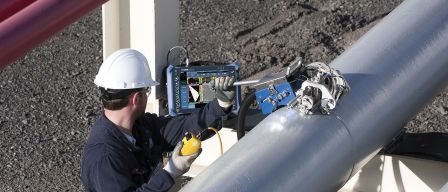General description of the application
Some aircrafts structural part such as engine mount and frame are now built with titanium casting. This material is very difficult to inspect because of its large grain structure. The usual inspection methods are X-ray and ultrasounds, however they present some limitations.
The use of ultrasound phased arrays brought a breakthrough in the inspection of casting by providing a much better detectability than the conventional methods.
Typical inspection requirement
• Finding and characterizing inclusions
• Covering casting part volume completely
• Flexible enough to fit various shapes
• Portable to perform inspections in-service or in-production
Defects detected
• Ceramic shell as small as 0.031 in. (0.787 mm) at a 1-in. (25 mm) depth
• Tungsten carbide as small as 0.031 in. (0.787 mm) at a 1-in. (25 mm) depth
Description of the solution
• Phased array probe steering the beam from -30°to 30°LW
• Merged top and side views
• 10 and 5 MHz linear phased array probe
Description of the inspection system
• FOCUS LT 32:32 or more
• Dynamic Depth Focusing
• Linear phased array probe
• Manual or automated X-Y scanner
Parts to inspect
• Engine mount
• Frame
• Thickness: 1 (25 mm) to 6 in. (152.4 mm)
Method of inspection
The phased array probe steers the beam continuously between -30°to 30°LW with an angular resolution of 1 degree. It allows the detection of orientated inclusions. Dynamic Depth Focusing is applied to keep the beam focused over the depth range. The probe scans a X-Y surface and data is merged together to create a top-side view of the casting part. Analysis is performed.
Advantages
• Better detectability than X-ray (The smallest defect detected by X-ray is 0.065 in; by UT phased arrays, it is 0.031 in.)
• Versatility
• Fast and easy to use

Detection of ceramic schells. Merged top- and side-views display.
GLIDER scanner
TomoScan FOCUS LT




